- Home
- D. H. Lawrence
Lady Chatterley's Lover Page 2
Lady Chatterley's Lover Read online
Page 2
I was at my sister’s in September, and we drove round—I saw the miners—and pickets—and policemen—it was like a spear through one’s heart. I tell you, we’d better buck up and do something for the England to come, for they’ve pushed the spear through the side of my England.
What he could do for “the England to come” was to write Lady Chatterley, and we are reminded of a letter from as far back as 1913:
Pray to your gods for me that Sons and Lovers shall succeed. People should begin to take me seriously now. And I do so break my heart over England when I read the New Machiavelli. And I am so sure that only through a readjustment between men and women, and a making free and healthy of this sex, will she get out of her present atrophy. Oh, Lord, and if I don’t “subdue my art to a metaphysic,” as somebody very beautifully said of Hardy, I do write because I want folk—English folk—to alter, and have more sense.
Fourteen years after his death, his widow said of Lawrence and Lady Chatterley and the English people, “he spoke out of them and for them, there in Tuscany, where the different culture of another race gave the impetus to his work.”
Between the cottage on Walker Street in Eastwood, or Haggs Farm outside it, and the Villa Mirenda outside Florence, lay a long history. In that history, three items loom large: Lawrence’s marriage to Frieda von Richthofen, the First World War, and travels all over the globe. His marriage is one of the most exploited subjects in our memoir literature, and all one need say of it here is that, whatever stresses it may have undergone, it had more of blessedness, and that without that blessedness, the lyrical portions of Lady Chatterley, which comprise a great hymn to true marriage, could not have been written. Lawrence’s personal experiences in the war are the subject of the chapter called “The Nightmare” in the novel, Kangaroo, and the atmosphere of the war and of a war-made world hangs over all his works from 1916 on but is most prominent in the quality of that social world that threatens the lyrical world of Lady Chatterley, for Lawrence felt as early as 1916 what we all feel today, “the violence of the nightmare released now into the general air.” The travels (southern and central Europe, the Far East, Australia, the United States and Mexico, Europe again) not only provided him with a series of settings through which his novels make their march and so lead him to their end at the Villa Mirenda, but also provided him with images of utopia (always smashed) that would give him the community relationship that he sometimes desperately felt he needed. It was only when he gave up that hope, and the programs that his novels sometimes developed out of that hope, that he could have come to rest in Lady Chatterley, where there is no program at all, only the inspired plea that the human being become what he already is, that is, human. The journey from the humanity and the inhumanity of his youth, to his discovery at the end of the essentially human as it could be defined in drama against that background—this is another circle that his last novel closes.
There were times in Lawrence’s career when the whole beautiful line of it, as it was finally drawn, threatened to blow up completely. After the purely autobiographical novel, Sons and Lovers, Lawrence wrote his two most complex works, The Rainbow and Women in Love. These were novels that attempted to seize directly on the psychic realities. They end with regenerate heroes who have experienced visions of human felicity for which they can find no place either in this world or in the realistic convention of the novel. Then begins a period for which bitter, surely, is a mild word—bitter, galled, the withers wrung. And yet, in this period, where Lawrence tries to bring his characters into vital social relationships, we are at the center of the most fascinating and alarming elements in Lawrence, the artist.
Aaron’s Rod (the novel that, in its first paragraph, announces the end of the war, the violence released now into the general air) was published in 1922, the year of Mussolini’s coup d’état; Kangaroo, in 1923; The Plumed Serpent, in January 1926. Unable to see any but negative virtues (that is, vices) in democracy, which seemed to Lawrence a means of freeing the individual to mediocrity and a numbed anxiety only, he was still fairly desperate to find some means of satisfying what he himself called his “societal impulse” and of making his novels end positively in this world. So he turned to undemocratic ideas, a part of the violence released now; and in these three novels, in three different ways, tried them out to see if they would work either for the novel or for life. They did not. This is the imaginative test of theoretical abstraction, and Lawrence’s greatness of mind shows in the necessity he felt to reject the abstraction when it would not work for the imagination. The first two of these novels are fragmentary, implosive structures because the author, while he cannot prove the abstraction right, is unwilling to let his story prove it wrong and so lets the story jar to a stop in negation. The third is a unified work because the lives of the characters, in the actualities of the plot, prove that the abstraction is merely abstract, that is, wrong, and the novel ends in its rejection.
Aaron’s Rod presents Lawrence in the character of Lilly, who assures Aaron Sisson that he will not find himself until he finds a greater man to whom he can submit his partial individuality; but in the end, Lilly can produce no such leader, not even himself. In Kangaroo, Lawrence puts himself in Aaron’s position, as the man who seeks the leader; but, confronted by the alternative of the socialist, Struthers, and the fascist, Kangaroo, the Lawrentian hero departs for America, where he hopes to find a more plausible choice. Then, in The Plumed Serpent, Lawrence tries still another device: he transforms his seeker into a woman, a jaded European who has severed her connections with her own social past and seeks fulfillment in Mexico through the leadership of two men who are trying to institutionalize a primitive religion which is not in the least unlike Lawrence’s own religion of “the dark gods”; but it will not work. As the two leaders fail her, so she fails them, and discovers, with Lawrence, that there are two kinds of power: the power to dominate others, and the power to fulfill oneself. “The leader-cum-follower relationship is a bore,” Lawrence wrote then, in a letter. “And the new relationship will be some sort of tenderness, sensitive, between men and men, and between men and women.” Lady Chatterley’s Lover, and last novel, was first to be called Tenderness.
This is the final Lawrence, the Lawrence who kicked out, although with a dragging reluctance, the hypothetical fragments that he had tried to shore against the world’s ruin and his own, and who was determined to attempt still to be free in the actualities of human relationship. He was an artist who had gone through a purgatorial period that sought escapes from freedom, and then settled with small content and no complacency into the paradise that knows what freedom is, or at least where it begins. This is the paradise that is allowed to human life when human beings can recognize that after all the sweat for something else, for something either more or less, the value of life exists in the act of living; that living means full living, or the life of the full and not the partial self, the self that realizes its powers rather than the self that seeks power or submits to it. And this is, after all, the beginning of the true democracy, as it is of the true marriage, because it is total integration, and therefore makes possible the only creative spontaneity, even though that be in isolation, in an Italian wood.
At the Villa Mirenda—a great square block of whitish-gray stone that stands, like the typical farm villa of Tuscany, alone on its hill, its clusters of cypresses thrusting up blackly green against the blue, its fields and vineyards falling away from it in all directions, and the matchstick dwellings of the contadini scattered here and there among the fields—here, the Lawrences saw few people. Chiefly they had the peasants and themselves. One reason that they took the place was because this was “a region of no foreigners.” Lawrence knew quite well what he was facing (“Have you built your ship of death, oh, have you?”) and he was trying to face it. “…people don’t mean much to me, especially casuals; them I’d rather be without,” he wrote; and, “the Florence society is no menace.” He did not want what he could have, and he could not h
ave what he felt that he needed. He took his isolation, then, with small content and no complacency. In July of 1926 he wrote to Rolf Gardiner as follows:
I believe we are mutually a bit scared. I of weird movements, and you of me. I don’t know why. But if you are in London even for a couple of days after the 30th, do come and see us, and we can talk a little, nervously. No, I shall ask you questions like a doctor of a patient he knows nothing about.
But I should like to come to Yorkshire, I should like even to try to dance a sword-dance with ironstone miners above Whitby. I should love to be connected with something, with some few people, in something. As far as anything matters, I have always been very much alone, and regretted it. But I can’t belong to clubs, or societies, or Freemasons, or any other damn thing. So if there is, with you, an activity I can belong to, I shall thank my stars. But, of course, I shall be wary beyond words, of committing myself.
Everything needs a beginning, though—and I shall be very glad to abandon my rather meaningless isolation, and join in with some few other men, if I can. If only, in the dirty solution of this world, some new little crystal will begin to form.
And even after he had finished the second version of Lady Chatterley (and among the truths that this novel most forcibly urges is the meaning and the necessity of isolation), he could still write as follows to Dr. Trigant Burrow:
I suffer badly from being so cut off. But what is one to do? One can’t link up with the social unconscious. At times, one is forced to be essentially a hermit. I don’t want to be. But anything else is either a personal tussle, or a money tussle; sickening: except, of course, just for ordinary acquaintance, which remains acquaintance. One has no real human relations—that is so devastating.
Better to have no social relationships at all than to have them and pretend that they are real! So he wrote disgustedly to Huxley of Beethoven, whose letters he was reading, “always in love with somebody when he wasn’t really, and wanting contacts when he didn’t really—part of the crucifixion into isolated individuality—poveri noi.” Every future holds only one final fact, and what Lawrence loved about Villa Mirenda was that it served to school him in that ultimate isolation.
I never know what people mean
To be alone is one of life’s greatest delights, thinking one’s own thoughts, doing one’s own little jobs, seeing the world beyond and feeling oneself uninterrupted in the rooted connection with the centre of all things.
In those barely furnished rooms, in that quiet country landscape, the rooted connection might yet be found.
There is nothing to save, now all is lost,
but a tiny core of stillness in the heart
like the eye of a violet.
Violets grew there in profusion, and Lawrence was dying among them. He was ill much of the time at the Mirenda, and his was an illness that could only be alleviated, not cured. If illness and the image of a black ship lay under his isolation, they affected in a curious way Lawrence’s attitude toward his work. During the months at Spotorno, after the English visit of 1925, he wrote only a few stories, his longest effort being that piece about an English girl called The Virgin and the Gypsy, which is preparatory to Lady Chatterley. At Villa Mirenda, the lethargic indifference, a weary kind of rest after all the high-strung battles, grew in him. He wrote his British publisher:
In the real summer, I always lose interest in literature and publications. The cicadas rattle away all day in the trees, the girls sing, cutting the corn with sickles, the sheaves of wheat lie all afternoon like people dead asleep in the heat. E più non si frega. I don’t work, except at an occasional scrap of an article. I don’t feel much like doing a book, of any sort. Why do any more books? There are so many, and such a small demand for what there are. So why add to the burden, and waste one’s vitality over it.
But news of the General Strike in England renewed the images of iron and of an “underground humanity” in his mind.
I feel bad about that strike. Italian papers say:
“The government will maintain an iron resistance.” Since the war, I’ve no belief in iron resistances. Flesh and blood and a bit of wisdom can do quite enough resisting and a bit of adjusting into the bargain—and with iron one only hurts oneself and everybody. Damn iron!
Then, once more, with the visit to England in the summer of 1926, mere images of iron became the monstrous realities of the senses, and soon after his return to Italy, he writes, “I’ve nearly done my novel.”
II
The story of Lady Chatterley’s Lover is among the simplest that Lawrence devised: Constance Chatterley, the frustrated wife of an aristocratic mine owner who has been wounded in the war and left paralyzed and impotent, is drawn to his gamekeeper, the misanthropic son of a miner, becomes pregnant by him, and hopes at the end of the book to be able to divorce her husband and leave her class for a life with the other man. Through all his career Lawrence had been concerned with the general theme of this book—the violation or the fulfillment of individuality in relationship—and many times he had handled the theme in the concrete terms here presented where fulfillment involves the crossing either of class or cultural lines, and often of both, where violation results from resisting this necessity. The familiar construction, then, is of a woman in a relatively superior social situation who is drawn to an “outsider” (a man of lower social rank or a foreigner) and either resists her impulse or yields to it. The two possibilities are embodied, of course, and respectively, in the situation into which Lawrence was born and in the situation into which he married. Inevitably, it became a favorite situation of his fiction.
Among the short stories, one might mention five as clear illustrations: one of his juvenile works, A Fragment of Stained Glass, deals with a medieval serf who flees his bondage with a miller’s daughter; in The Daughters of the Vicar, one daughter chooses to defy her family in order to marry a miner; in The Shades of Spring, a Miriam-like girl reveals to her old, poetic lover that a gamekeeper has taken his place; in Mother and Daughter, the daughter chooses to upset her mother’s values and her own by committing the absurdity of going off with an Armenian known to the mother as “the Turkish Delight”; in None of That, an enormously wealthy daughter of the jazz age invites an involvement (to her destruction) with a Mexican bullfighter.
Among the novelettes, one might again mention five. In The Fox, a constrictive relationship between two girls is shattered by the intrusion of a farmer-soldier and his passion for one of them; in The Ladybird, an aristocratic Englishwoman yields to a mysterious central European, Dionys Psanek; in St. Mawr, Mrs. Witt and her daughter Lou are attracted by a Welsh groom and a half-breed Navajo; in The Princess, a New England virgin wishes to yield to a Mexican guide and discovers only too late that she cannot truly yield; in The Virgin and the Gypsy, an English virgin yields to a gypsy.
From the ten novels, we can once more chose five, although the situation is omnipresent. There is Lady Chatterley’s Lover itself. In Sons and Lovers, the parental situation is not only an obvious example but the archetype. In The Lost Girl, a middle-class English girl leaves the comforts ( and depredations ) of home for a rigorous life with an Italian peasant. In The Plumed Serpent, Kate Forrester, a refined European, yields (temporarily) to the intellectual leadership of one Mexcican and the physical leadership of another. And in the very first novel, The White Peacock, the situation not only presents itself in the Lettie-George relationship, but a gamekeeper, Annable, appears briefly but volubly as the earliest version of Parkin-Mellors, the gamekeeper of the last novel.
Such a catalogue as this takes two risks: it suggests a limited imaginative range, and it seems to denigrate the subject by a tone of frivolity. Neither risk is serious, for the theme itself, however baldly one may state the situations that embody it, is pushed into every area that concerns us most seriously in this century. Lady Chatterley’s Lover, like everything that Lawrence wrote, is an affirmation of life values as against the mechanization of human nature. This, his gener
al subject matter, may be broken down into two major themes; the relation of men and women, and the relation of men and machines. In the works as they are written, the two are one, and his most subtle and penetrating perception, the knowledge that social and psychological conflicts are identical, is so firmly integrated in the structure of his books that it is almost foolhardy to speak of his having two themes when in fact he had one vision. But a vision has both a background and a foreground, and one may say, perhaps without distortion, that the men and machines relationship is the background, the man and woman relationship, the foreground. This division does not mean that the first determines the second, for it would be just as true to say that the second determines the first. They are, in fact, inextricable. We might say that one provides the scene, and the other, the drama enacted on that scene.

 Look! We Have Come Through!
Look! We Have Come Through!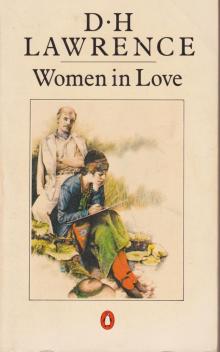 Women in Love
Women in Love The Ladybird
The Ladybird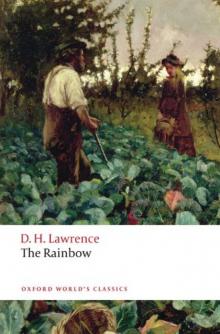 The Rainbow
The Rainbow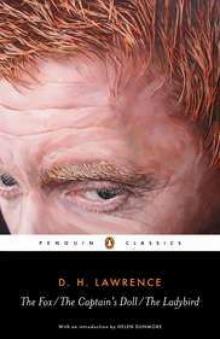 The Captain's Dol
The Captain's Dol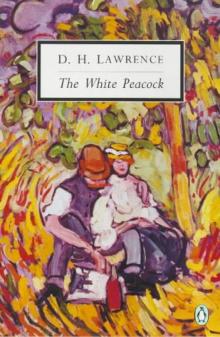 The White Peacock
The White Peacock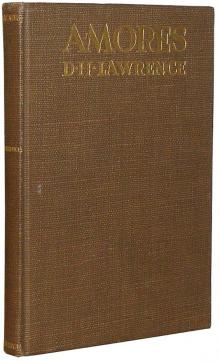 Amores
Amores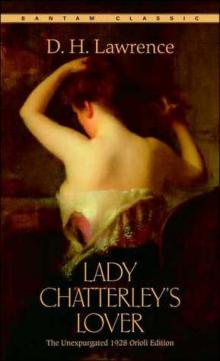 Lady Chatterley's Lover
Lady Chatterley's Lover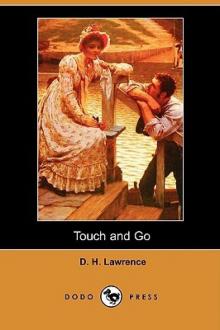 Touch and Go
Touch and Go The Wintry Peacock
The Wintry Peacock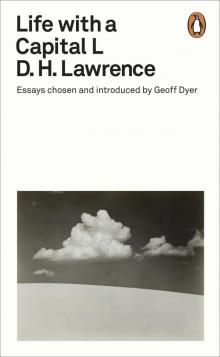 Life with a Capital L
Life with a Capital L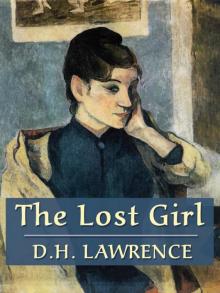 The Lost Girl
The Lost Girl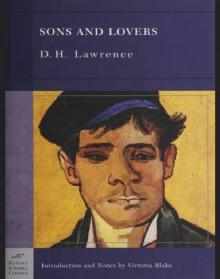 Sons and Lovers
Sons and Lovers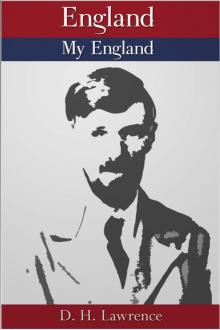 England, My England
England, My England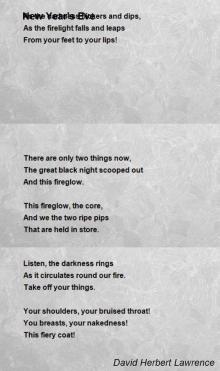 New Poems
New Poems Twilight in Italy
Twilight in Italy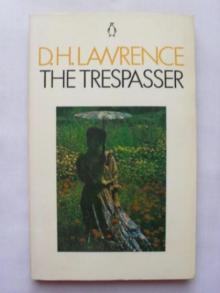 The Trespasser
The Trespasser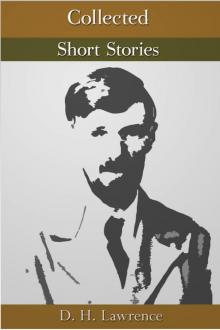 The Collected Short Stories
The Collected Short Stories The First Lady Chatterley's Lover
The First Lady Chatterley's Lover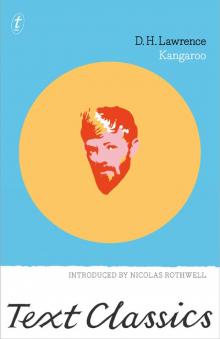 Kangaroo
Kangaroo Bay
Bay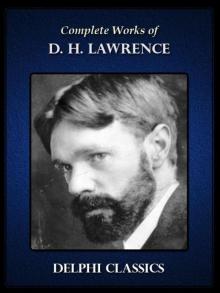 Complete Works of D.H. Lawrence
Complete Works of D.H. Lawrence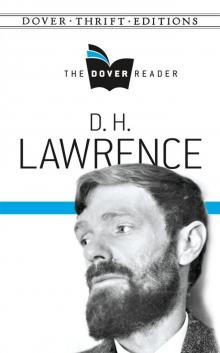 D H Lawrence- The Dover Reader
D H Lawrence- The Dover Reader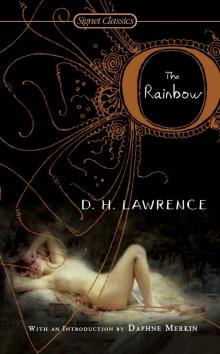 The Rainbow (100th Anniversary ed.)
The Rainbow (100th Anniversary ed.)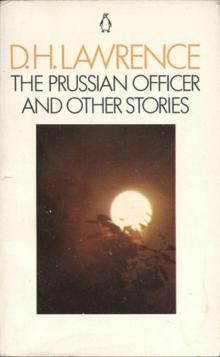 The Prussian Officer
The Prussian Officer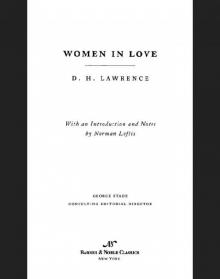 Women in Love (Barnes & Noble Classics Series)
Women in Love (Barnes & Noble Classics Series)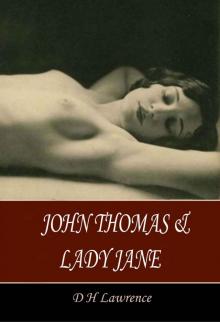 John Thomas and Lady Jane
John Thomas and Lady Jane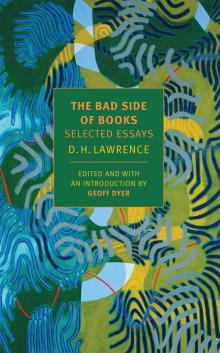 The Bad Side of Books
The Bad Side of Books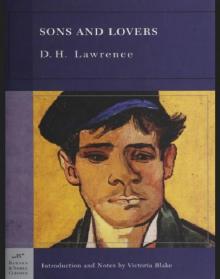 Sons and Lovers (Barnes & Noble Classics Series)
Sons and Lovers (Barnes & Noble Classics Series)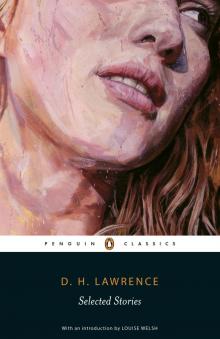 Selected Stories
Selected Stories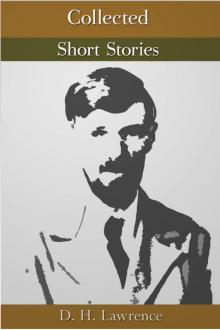 Collected Short Stories
Collected Short Stories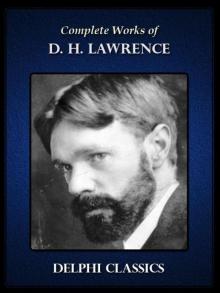 Complete Works of D.H. Lawrence (Illustrated)
Complete Works of D.H. Lawrence (Illustrated)